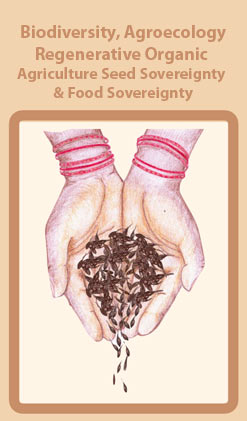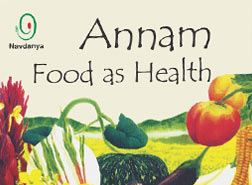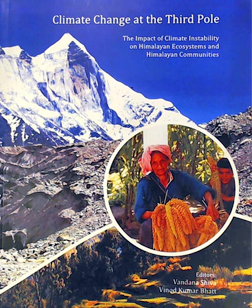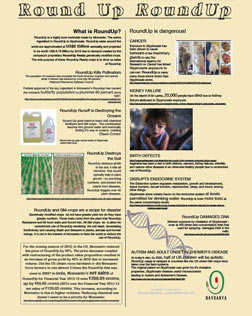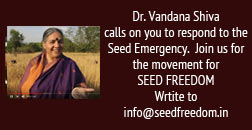NATIONAL MEETING ON ENDOSULFAN HEALTH HAZARDS; NEED FOR BAN, 7th April, 2011, I.S.I. Lodi Road, New Delhi
- K.Jalees
Endosulfan is an organochlorine pesticide which is classified as highly toxic More than 74 countries have already banned Endosulfan and around 20 countries have asked for the ban. Since Endosulfan is a persistent pollutant, the dangers it poses will linger and multiply through the generations, causing harm on a scale that can not be presently fully quantified. Government of India has to take a stand on Endosulfan in the coming Stockholm conference in Geneva.
More than 9000 victims of Endosulfan have been identified in Kasargod district of Kerala alone, out of which over 4800 are bedridden and about one thousand already died. A consistent movement of the survivors against Endosulfan over one and half decade forced Kerala as well as Karnataka Government to ban Endosulfan.
In the context of serious health hazards to create a public awareness several organizations such as Endosulfan Spray Protest Action Committee, Peace, Insaf, Visual Search, Initiative for Health & Equity in Society and others called a meeting on 7th April 2011 at Indian Social Institute, (I.S.I.)Lodi Road, New Delhi.
The meeting started with the screening a short film called ‘After the Deluge’ on the agony of Endosulfan affected victims. The film depits the horrifying health implications of Endosulfan on the people. According to the film Endosulfan is acutely neuro toxic. Polio like deformities, enlarged tongue, tilting of the eye, patching and blackening of skin, convolution of limbs and figures, early maturation in females are rampant in the villages of Kasargod. Endosulfan leaves children and other adults disfigured and crippled for life. It has spread its terror for last 35 years. The culprit is not a multinational company, but a Public Sector Company. ‘The Plantation’ Corporation of Kerala.’
Shabina, a victim says, “Every one believes that Endosulfan is the reason for the wilments. It even killed birds and snakes.” Another victim explained that when she was a student, some drop fell down on her body, she felt itching and since then her condition deterioted. Now she is totally paralysed. One mother was found weeping when she said, “Till the age of six, her son was OK, however after that he was totally paralysed. He is lifted by others.”
Majority of the victims are children. More they grow, lesser is the strength. They are not able to make any communication. Because of genetic malation, coming generations will also be affected. Women are afraid of family and fear of delivering the baby. To treat the skin disease, people sold their entire property. According to experts, ‘Endosulfan spray should be 3 km away from human habitation. If it falls on the stream, it shall also be poisoned. So far, 16 committees have been formed to study hazards of Endosulfan, but all of them failed to address the problem. It is believed that if proper health studies are executed, the impact of Endosulfan shall be extremely shocking and may overtake the dimension of any disaster so far.
Dr. Mira Shiva : Dr. Mira is the director of Initiative for Health & Equity in Society. According to Dr. Mira, ‘India is the only country which wants to continue the use of Endosulfan, though alternative to Endosulfan exists. This is criminal. The delegation which shall go to Stockholm will have people from pesticide industry and no one from activists. Scientists are also on the pay-roll of companies.”
Sudheer Kumar : He is Convenor, ‘Endosulfan Spray Protests Action Committee. Earlier he was a school teacher. He resigned from the service to help the victims in Kasargod. He narrated the impacts of Endosulfan on the students. One of his students ‘Ashraf’ when coming to school fell down and by the age of 13 he died. Similar is the case of Shantana. So many victims are going to hospitals and doctors do not know how to treat them.
Ravi Agarwal : Mr. Ravi is the Director of Toxic Link. His organization is a member of a network in 100 countries. He said, “There are over 1000 hazardous chemicals in the market and only few of them have toxic data. Instead of the manufacturer, only the public has to prove that the chemical is hazardous.”
He explained that there is a process of banning a chemical and the process of banning Endosulfan started in 2008. Endosulfan has a number of data and all of them show that Endosulfan should be banned. There are two main manufacturers of Endosulfan; One is Hindustan Insecticide Limited (HIL) and the Second is in Private Sector. The manufacturer or the Government has the standard tactics to deny the toxicity of the chemicals. They blame the activists as being the agents of MNC or other company.
K.P.Sasi : He is from ‘Visual Search’. Mr. Sasi recalled, “During the Vietnam war the American army sprayed the herbicide called Agent Orange on the Vietnamese for a short period of time. Many children of Vietnam are still being born deformed as a result”.
He added, “But Kasargod, the Plantation Corporation of Kerala sprayed Endosulfan for 25 years and the local people are still suffering in a major manner. We consider this atrocious action as a war on people. Politicians like Sharad Pawar who are powerful ministers in the Govt. as Agriculture Minister & also of Food Processing Industry have defended Endosulfan as a necessity, and have known to overlook public health and Safety concerns. As per the Banerjee Commission Recommendations, Endosulfan sprays should not be allowed in areas where water bodies exist.
However, the spray continued in Kasargod where 13 rivers, supporting streams and other many water bodies existed. Since 1993 the sprays were executed without permission of the Central Insecticide Board. This clearly shows that the sprays in Kasargod were absolutely illegal. The unholy nexus between the bureaucrats, Government institutions and the profit hungry corporates have to be held responsible for the thousands of victims of Endosulfan in Kasargod. Reports have also shown disastrous health effects on local people in Idukki, Palghat and southern parts of Karnataka as a result of spray of Endosulfan.
The Civil Society organizations involved in the campaign against Endosulfan wants a thorough review. Their main demands include :
1. A permanent ban on Endosulfan all over the country before the Stolkholm Conference and supporting the Ban in Stockhom Conference.
2. Proper relief, rehabilitation and compensation to the survivors of Endosulfan.
3. Severe Action including criminal prosecution of those responsible for perpetuation of the preventable tragedy on innocent victims whether they belong to the corporates, central and state government authorities.
The Edosulfan Spray Protest Action Committee called for a
support of all like-minded organizations and individuals to support a large national Convention against Endosulfan on April 17,2011.
“Like Kerala’s Kasargod, neighbouring district ‘Dakshina Kannada in
Karnataka is also bearing the brunt of spraying of Endosulfan, while Kasargod grabbed the media spot least, victims in Karnataka are still struggling for recognition.
On the recommendations of the National Human Rights Commission
(NHRC), the National Institute of Occupational Health (NIOH) conducted a thorough epidemiological study. One of the important conclusions of the study was that there is significant higher prevalence of neurobehavioural disorders, congenital malformation in females and abnormalities related to male reproductive system. The possibility of endocrine disrupting effect of endosulfan observed in the study has great relevance to the health of the future generations.
Central Government claims that there is no scientific basis for the
bann already imposed by other nations. The NHRC was at a loss to understand the logic of this stand. The Government of India does have independent but similar scientific evidence. Its directive to Indian Council for Medical Research (ICMR) to review its study implies that Government finds its conclusion inconvenient.
According to NHRC, ‘The stand of Union Government is a grave
violations of human rights. “As the large number of victims are in small locality of eleven villages, a Centrally sponsored Pallilative Care Centre should be established in Kasargod and effective ambulance services be provided to all physically handicapped victims” recommended NHRC. It also recommended that the State should pay at least Rs.5 lakh to the next of kin of those who died and to those who are bed ridden or unable to move without help or mentally retarted and Rs. 3 lakh to those who got other disability.
NHRC further suggested, “there is a need to conduct a survey of other
populations that might also have been affected by the use of Endosulfan including Palakkad where there are reports of similar problem faced by the villagers.”


